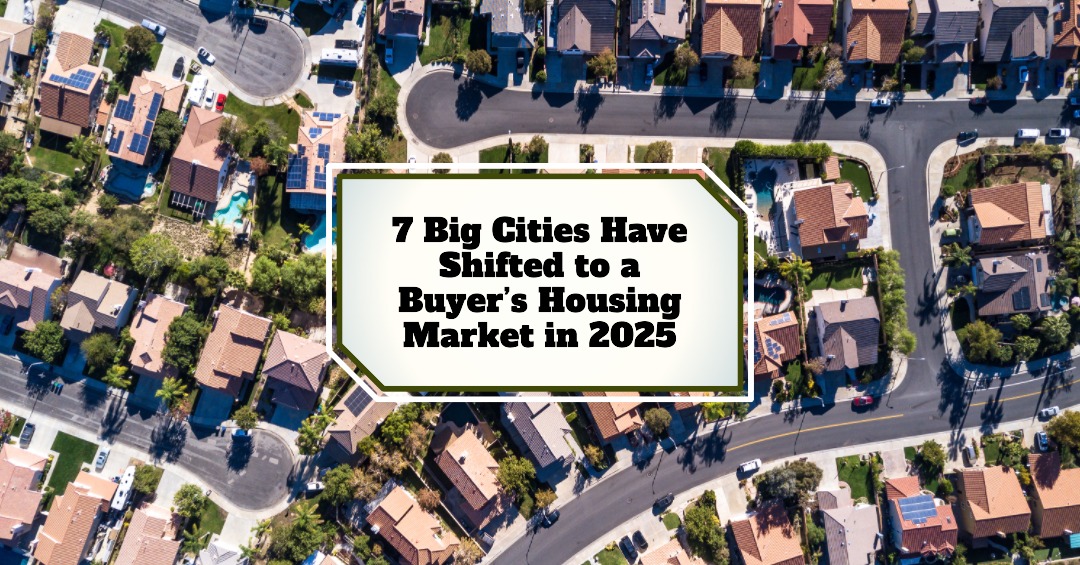S
even major U.S. metros have slipped into buyer‑friendly territory in 2025, giving ordinary homebuyers more leverage after years of seller dominance. The national market now sits at a five‑month supply of homes for sale—its first balanced summer in nine years—yet local dynamics reveal a more nuanced picture.
**What “Months of Supply” Means**
- < 4 months: seller’s market – quick sales, rising prices.
- 4–6 months: balanced – both sides hold sway.
- > 6 months: buyer’s market – more inventory, longer decision time, better negotiation room.
A five‑month national supply signals a neutral zone, but city‑level data shows seven metros with at least six months of inventory.
### Buyer‑Market Leaders
| City | Months of Supply | Key Highlights |
|------|------------------|----------------|
| **Miami, FL** | ~10 | Median list price $510k (‑4.7% YoY), inventory up 35%, listings stay 15 days longer. Older condos under $500k offer more room to negotiate; single‑family homes under $500k are scarce. |
| **Austin, TX** | ~8 | 33% of listings had price cuts in June; median price fell 4.5% to $525k. Inventory surged 70% above pre‑pandemic levels. |
| **Orlando, FL** | 6.9 | Median price $429k (‑3.4% YoY), inventory up 34%, homes linger 14 days longer. Buyer’s market since January. |
| **New York City, NY** | 6.7 | Despite its reputation, price per square foot has dropped YoY; inventory now favors buyers. |
| **Jacksonville, FL** | 6.3 | Rising inventory and longer market times. |
| **Tampa, FL** | 6.3 | Similar to Jacksonville, more homes available. |
| **Riverside, CA** | 6.1 | Inventory growth supports buyer advantage. |
Realtor.com’s senior economist, Jake Krimmel, notes that increased inventory, longer days on market, and frequent price reductions are clear signs of buyer‑friendly conditions, especially in the South and West. He predicts the trend will continue into fall, offering a window for patient, financially prepared buyers.
### Seller Behavior
- **Price Cuts**: Over 25% of U.S. listings were discounted in August, especially in the South and West.
- **Delistings**: Sellers are pulling homes off the market rather than lowering prices. July saw a 57% YoY jump in delistings, with Miami, Phoenix, Riverside, and Tucson leading.
Delistings reduce supply, potentially tightening the market, but they also signal sellers’ reluctance to adjust prices, creating opportunities for buyers who can negotiate.
### Takeaway for Buyers
- **Research Specific Markets**: A city’s overall buyer‑market status doesn’t guarantee every property is a bargain. Understand neighborhood trends and property types.
- **Leverage Inventory Growth**: More homes and longer market times give buyers room to negotiate price, terms, and concessions.
- **Stay Informed**: Monitor inventory levels, days on market, and recent price changes to time offers strategically.
The shift toward balanced markets is underway, but the seven highlighted cities are the front runners in buyer advantage. For those ready to act, now is a prime moment to secure favorable deals.
---
**Invest in Real Estate in the Top U.S. Markets**
Discover high‑quality, ready‑to‑rent properties that deliver consistent returns.
Contact Norada today to grow your portfolio with confidence.
Call (800) 611‑3060 or visit our website to get started.
**Also Read**
- The $1 Trillion Club: America’s Richest Housing Markets Revealed
- 4 States Dominate as the Riskiest Housing Markets in 2025
- Housing Market Predictions: Home Prices to Drop by 0.9% in 2025
- Housing Market Predictions 2025 by Norada Real Estate
- Housing Market Predictions 2025 by Warren Buffett’s Berkshire Hathaway
- Will the Housing Market Crash in 2025: What Experts Predict?
- Housing Market Predictions 2026: Will it Crash or Boom?
- Housing Market Predictions for the Next 4 Years: 2025 to 2029
- Real Estate Forecast: Will Home Prices Bottom Out in 2025?
- Real Estate Forecast Next 5 Years: Top 5 Predictions for Future
- Will Real Estate Rebound in 2025: Top Predictions by Experts
- Real Estate Forecast Next 10 Years: Will Prices Skyrocket?













